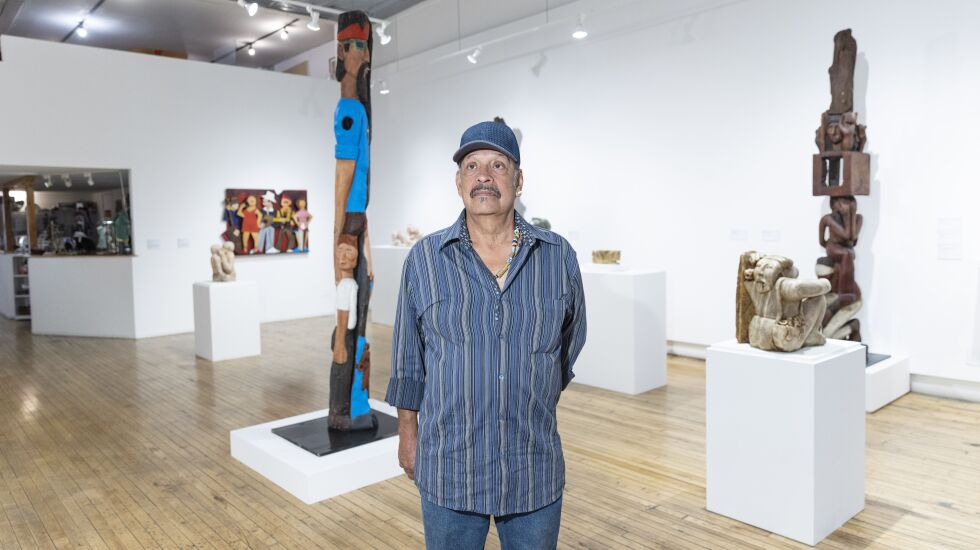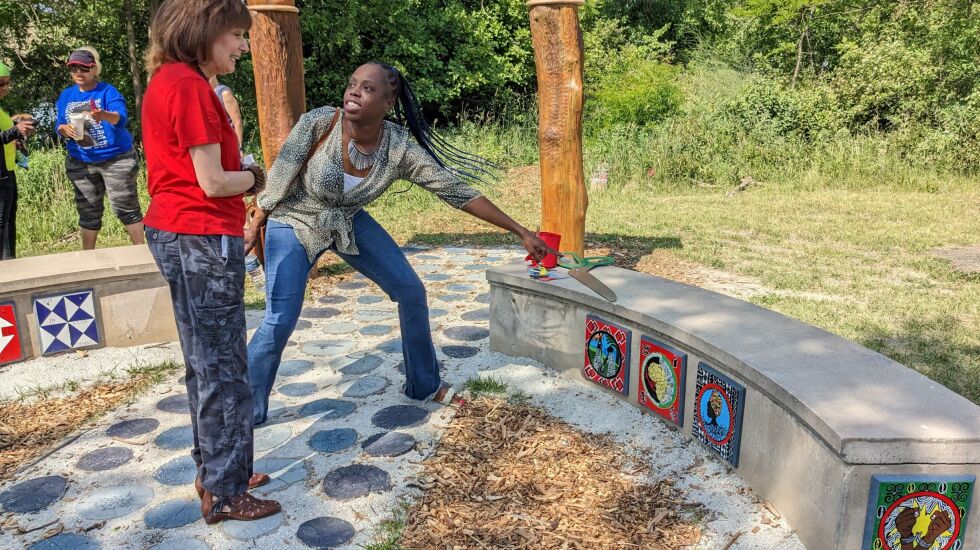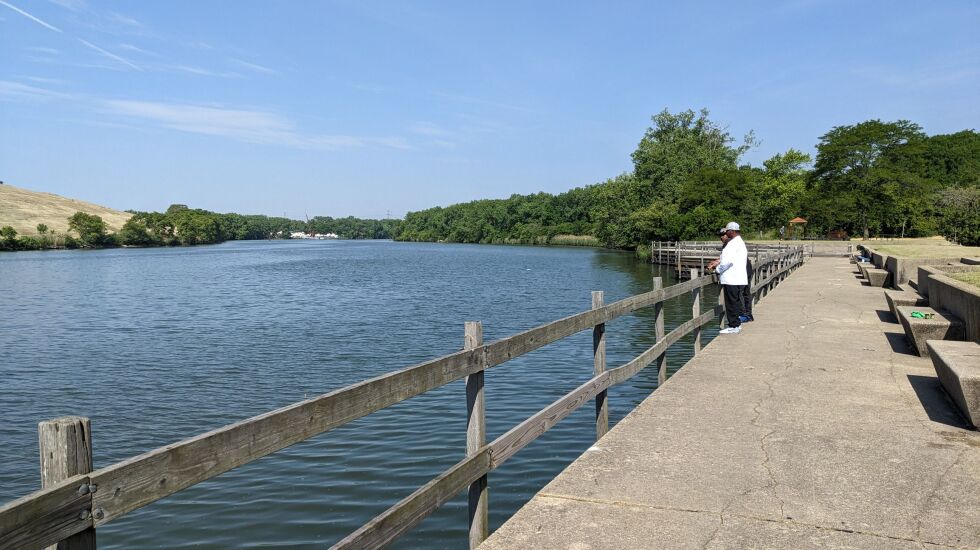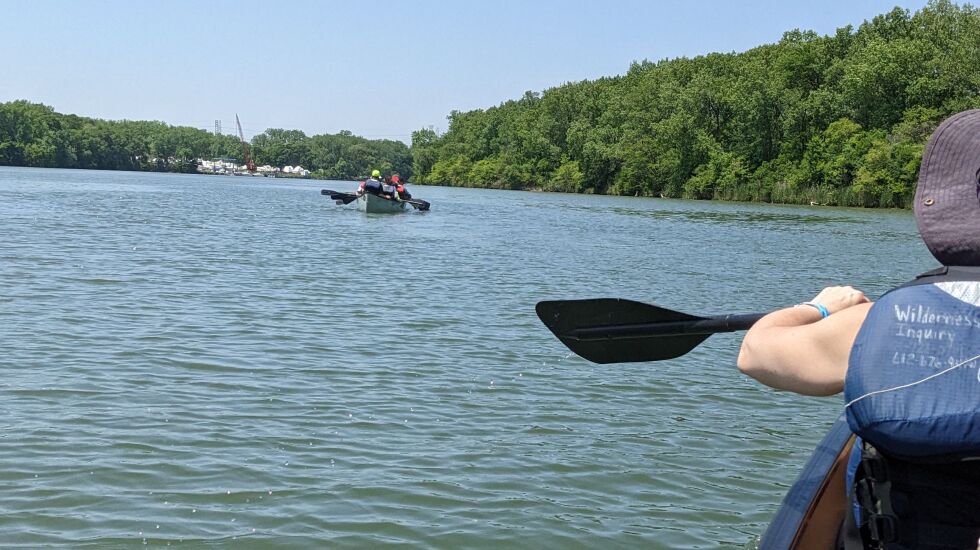
Roman Villarreal is rooted in reality, befitting a former steelworker and Vietnam veteran.
So there’s logic to his choices in doing his artwork for ‘‘Prairie Boat,’’ the gathering-space project at Beaubien Woods revealed last Saturday at the Forest Preserves of Cook County site along the Little Calumet River on the Southeast Side.
For his part of the project, he worked seats out of Indiana limestone, a deliberate choice.
‘‘It’s not the most prettiest one, it doesn’t polish, but it gives you a good representation of what it is, and I love it,’’ said Villarreal, who has worked with fancier stone on other projects. ‘‘The limestone’s character changes with time and grabs its own light. Mother Nature is the second artist; I’m the first one. She does the rest of the work.’’

The focus is organic.
‘‘A turtle, a frog, a fish and an eagle, and we selected those animals from the marsh,’’ he said.
That ties into work he has done for nearby Big Marsh Park.
I felt like a fanboy meeting Villarreal, 73. I always visit his ‘‘Tribute to the Past,’’ the main artwork at Steelworkers Park, on my way to fish for perch at the North Slip. He has lived a full life, and it shows in his art.
As a former steelworker, Villarreal said: ‘‘OK, so that was kind of important to me to leave a mark that we were there, and I was fortunate with the committee to leave a legacy.’’
‘‘Prairie Boat,’’ designed by artist Christine Perri, is ‘‘inspired by the African American Heritage Water Trail and native prairie landscapes (a boat in the sea of prairie).’’ A community curatorial committee convened by the Field Museum chose the design.
Perri had a collection of artists connected to the Southeast Side. Painters on the boat were Patrick Thompson (‘‘Heroes’’), Jittaun Priest (‘‘Past, Present, Future’’), Osei Agyeman-Badu (‘‘Underground Railroad Quilts’’) and Kadija Stallings (‘‘Slavery and Ancestry’’). Greencorps Chicago did the landscaping. Log-path painters were Ajiah Gilbert, Leslie Leon-Aguilar and Maybelline Mariscal. Woodworker Craig Klucina did the prow and portal roof.

‘‘It’s a big part of history, and I am happy to be able to share with all the others,’’ said Stallings, who saw the installation for the first time.
This was a collaborative project, with Openlands partnering with Imani Village, the Far South Chicago Coalition, the Field Museum and the FPCC.
Also included in the project are the restoration of 20 acres of prairie and the removal of invasive woody vegetation from trails.
In extraneous remarks before his formal statement, FPCC general superintendent Arnold Randall said: ‘‘It is one of my favorite places in the forest preserves.”
That’s a remarkable and important affirmation, considering Beaubien Woods was long a forgotten preserve.
In related matters, the FPCC will begin a major reworking of the launches and the fishing area along the Little Cal in July. When I arrived early, two guys chatted by the river. The one fishing expertly worked Gulp! Alive! for bluegills without catching any because the water was dirtied by passing boats.

For the occasion, poet Jannie Toles Coleman wrote the poem ‘‘When I See You,’’ a dedication to ancestors, which concluded: ‘‘When I see you, oh, ancestor of mine, I see me, and we are beautiful.’’
The day was also a reveal for the African American Heritage Water Trail (tinyurl.com/53uek7hv), which runs from Beaubien Woods to Robbins. It celebrates 180 years of African American history in the area, including the Underground Railroad, civil rights, the birth of environmental justice and the Tuskegee Airmen.
After the reveal, several dozen of us toured part of the trail in Wilderness Inquiry’s canoemobiles. We paddled from Beaubien Woods to Chicago’s Finest Marina — the first Black marina in the area — on the site of the former Ton Farm, a stop on the Underground Railroad.
‘‘It is so peaceful,’’ Vershawn Grier said as we paddled back to Beaubien Woods.
It was time.
Despite the hubbub of four canoemobiles, we saw egrets, great blue herons, gulls, terns, swallows, Canada geese and mallards and had vultures coasting overhead. The star was a watersnake swimming, seemingly, the whole width of the river.
The remarkable turnaround for the area keeps on keeping on.








